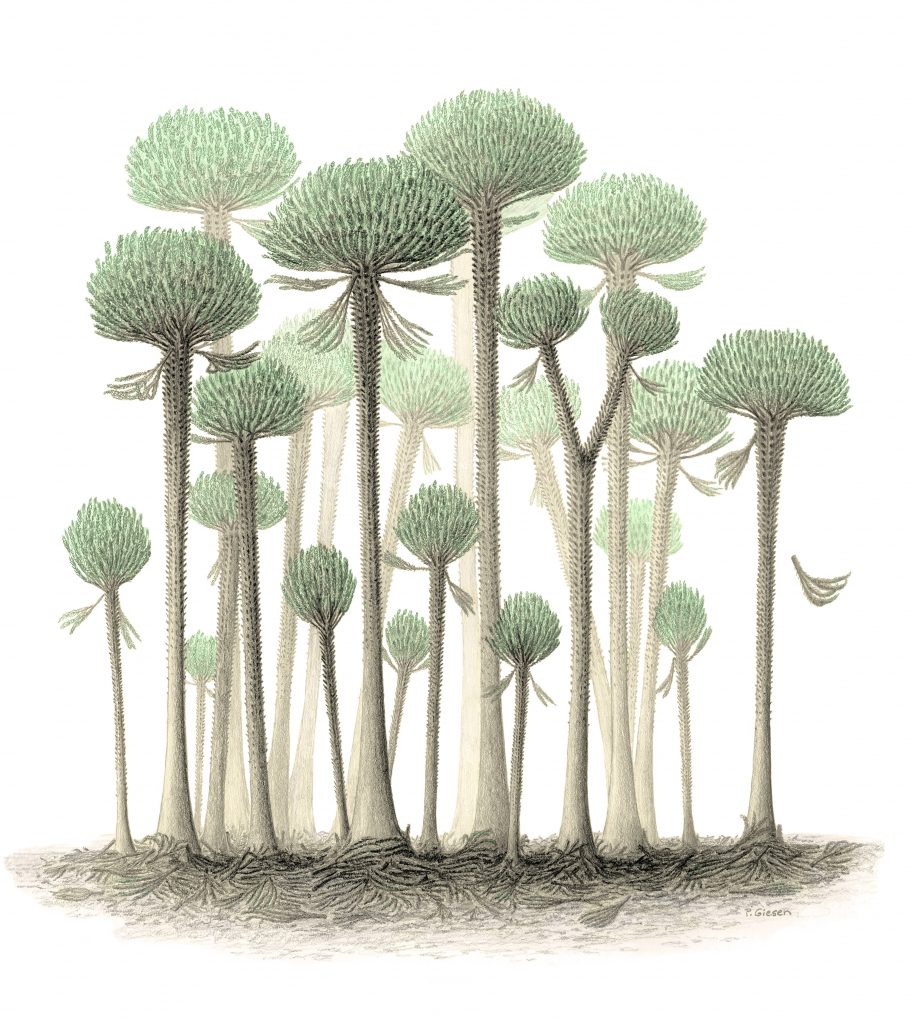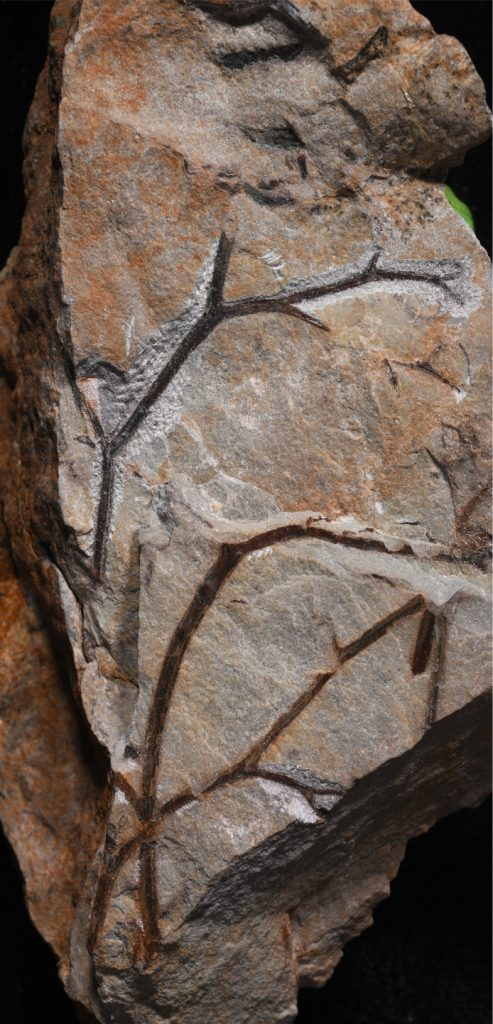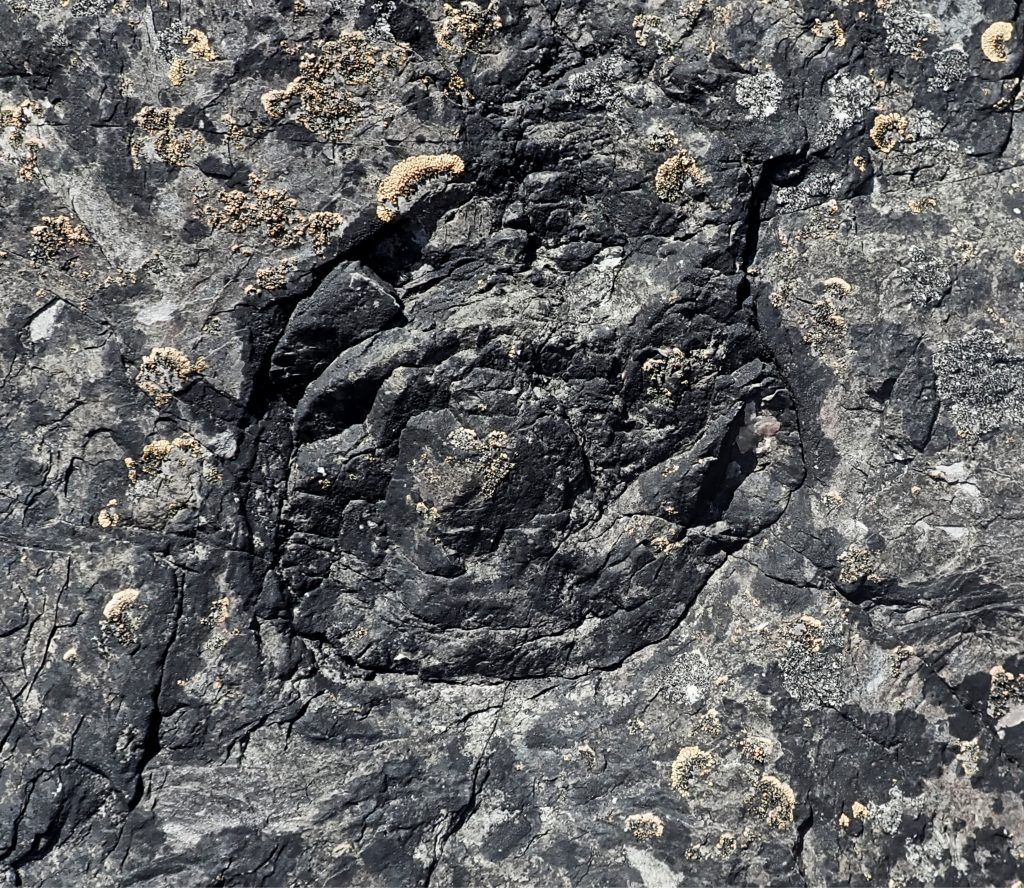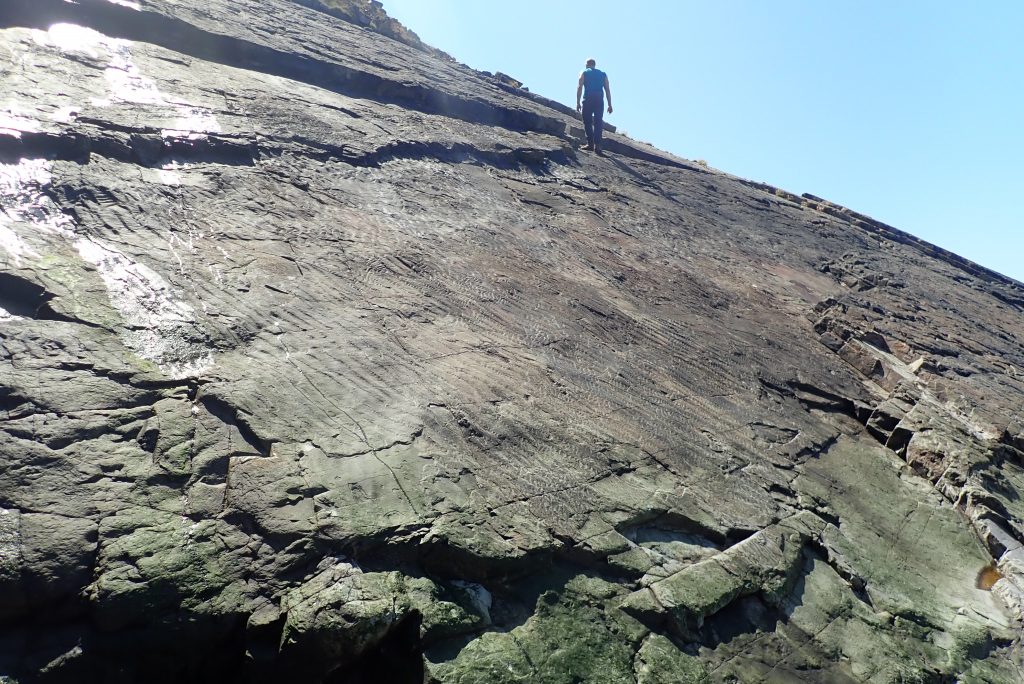Dr William McMahon discovers the Earth’s oldest fossilised forest
Dr William McMahon (Clare Hall Research Fellow) and Professor Neil Davies (Churchill College) have discovered the oldest fossilised forest known on Earth in the high sandstone cliffs along the Devon and Somerset coast of South West England. The fossil forest dates from approximately 390 million years ago during the Devonian Period, and is comprised of Calamophyton. Though they resemble palm trees, they are very different from modern trees, and instead had thin and hollow trunks standing two to four metres tall, and twig-like structures on their branches. The Devonian Period marked the beginning of life expansion onto land, with the first seed-bearing plants and earliest land animals. During this period, the fossil forest would have been further south, connected to parts of Germany and Belgium, rather than attached to England.


Though the region was previously assumed to not contain significant plant fossils, this new discovery reveals how early trees helped shape landscapes and stabilise riverbanks and coastlines hundreds of millions of years ago. The results are reported in the Journal of the Geological Society.
It was an exciting discovery as it provides a direct window into a key transition in Earth history, the interval over which vegetation first expanded across our continents. We were hopeful to find evidence of vegetation in these rocks, but because of their age, 390 million years old, certainly weren’t expecting to find anything that resembled a fossil forest (the previous record holder is 4 million years younger and found in NY State). Now we can look to understand the ecology of a forest of this age, and work out what impact it was having on its surroundings. This interval of Earth history, the Devonian, saw fundamental changes to how Earth behaved as a planet as a result of the evolution of trees and other vegetation. With this added discovery we can look to better understand the impact of Earth’s earliest forests a little better.
-Dr McMahon



Read more about the discovery here, and read the full article published in the Journal of the Geological Society here.